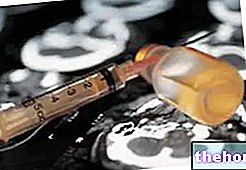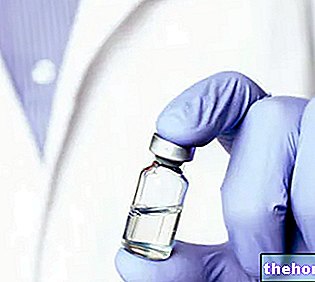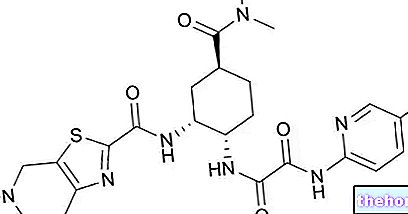
What is Ravicti - Glycerol Phenylbutyrate and what is it used for?
Ravicti is a medicine used for the long-term treatment of urea cycle disorders in adults and children aged two months and older when the disease cannot be managed with dietary modifications alone. Patients with disorders of the urea cycle. urea cycle fail to eliminate waste nitrogen from the body due to a lack of certain liver enzymes. In the body, waste nitrogen is converted into ammonia, which is harmful if it accumulates. Ravicti is used in patients with deficiency of one or more of the following enzymes: carbamoyl phosphate synthase I, ornithine carbamyltransferase, argininosuccinate synthetase, argininosuccinate lyase, arginase I and ornithine translocase.
Ravicti contains the active substance glycerol phenylbutyrate.
Because the number of patients with urea cycle disorders is low, these diseases are considered 'rare', and Ravicti was designated an 'orphan medicine' (a medicine used in rare diseases) on 10 June 2010.
How is Ravicti - Glycerol Phenylbutyrate used?
Ravicti is available as a liquid (1.1 g / ml) to be taken by mouth or through a tube that passes through the nose and into the stomach or that passes through the belly to the stomach. It can only be obtained with a prescription and should be prescribed by a doctor who has experience in the treatment of patients with urea cycle disorders.
Protein is a source of nitrogen, therefore Ravicti must be used in conjunction with a special low protein diet to reduce nitrogen intake and, in some cases, food supplements (based on the daily protein intake needed to growth and development).
The dose of Ravicti depends on the patient's diet, height and weight. During treatment, blood tests should be performed regularly to adjust the daily dose. The daily dose of Ravicti should be divided into equal amounts and administered. with each meal. For more information, see the Summary of Product Characteristics (also part of the EPAR).
Ravicti therapy may be needed throughout life unless the patient receives a successful liver transplant
How does Ravicti - Glycerol Phenylbutyrate work?
The active substance in Ravicti, glycerol phenylbutyrate, is converted into phenylacetate in the body. Phenylacetate combines with the amino acid glutamine present in proteins, which contains nitrogen, to form a substance that can be eliminated from the body by the kidneys. it decreases nitrogen levels in the body, reducing the amount of ammonia produced.
What benefit has Ravicti - Glycerol Phenylbutyrate shown during the studies?
A study of 88 adults with urea cycle disorders compared Ravicti with sodium phenylbutyrate (another medicine used to treat urea cycle disorders). The main measure of effectiveness was the change in blood ammonia levels after 4 weeks of treatment. The study revealed that Ravicti is at least as effective as the comparator drug in controlling the level of ammonia in the blood: the estimated mean ammonia level was approximately 866 micromol per liter in Ravicti-treated patients and 977 micromol per liter in sodium-treated patients. phenylbutyrate. Additional data from supportive studies have shown similar effects of Ravicti in children aged 2 months and older.
What is the risk associated with Ravicti - Glycerol Phenylbutyrate?
The most common adverse events of Ravicti (which may affect more than 5 in 100 people) are diarrhea, flatulence (passing gas), headache, decreased appetite, vomiting, tiredness, feeling unwell and abnormal skin odor.
Ravicti must not be used to treat acute hyperammonaemia (sudden rise in ammonia levels in the blood). For the full list of side effects reported with Ravicti and their limitations, see the package leaflet.
Why has Ravicti - Glycerol Phenylbutyrate been approved?
The Agency's Committee for Medicinal Products for Human Use (CHMP) decided that Ravicti's benefits are greater than its risks and recommended that it be approved for use in the EU.
Ravicti has been shown to be effective in reducing the level of ammonia in the blood in patients with urea cycle disorders. Ravicti is a sustained release medicine, which means that the active substance is released steadily throughout the day. Therefore, also the elimination of waste nitrogen occurs constantly and this produces a better control of the levels of ammonia in the blood during the whole day. For the same reason, Ravicti should not be used to treat acute hyperammonaemia, for which faster acting treatments are required.
Furthermore, as it is available in liquid form, the Committee felt that Ravicti may be more acceptable, especially for children, than other granular medicines to add to food; the liquid formulation also facilitates its administration via tube in patients who are unable to swallow due to neurological problems.
The side effects of Ravicti were mainly in the gut and were considered manageable. However, further data on the long-term safety of Ravicti are awaited.
What measures are being taken to ensure the safe and effective use of Ravicti - Glycerol Phenylbutyrate?
A risk management plan has been developed to ensure that Ravicti is used as safely as possible. Based on this plan, safety information has been included in the summary of product characteristics and package leaflet for Ravicti, including the appropriate precautions to be followed by healthcare professionals and patients.
In addition, the company that markets Ravicti will set up a patient registry to get more information on the long-term benefits and safety of the medicine.
More information about Ravicti - Glycerol Phenylbutyrate
For more information about Ravicti therapy, read the package leaflet (included with the EPAR) or contact your doctor or pharmacist.
The information on Ravicti - Glycerol Phenylbutyrate published on this page may be out of date or incomplete. For a correct use of this information, see the Disclaimer and useful information page.




























